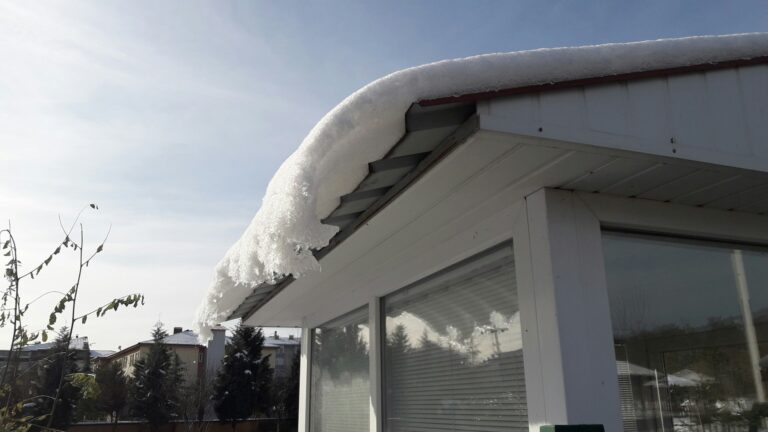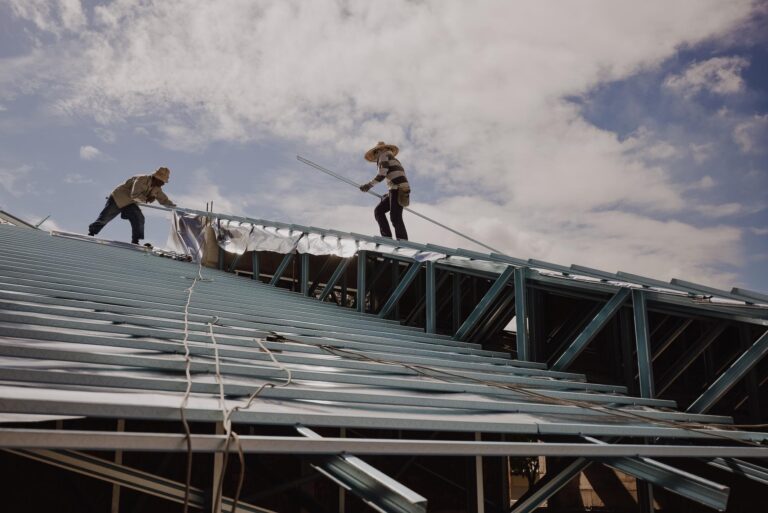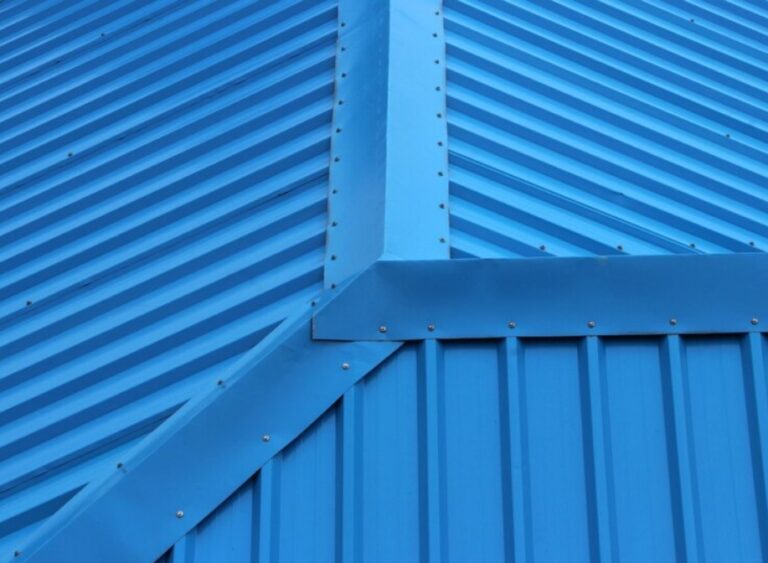For commercial buildings with a metal roof, skipping regular inspections can lead to bigger problems down the road. Long-lasting doesn’t mean invincible, and even high-quality commercial sheet metal can wear down under constant exposure to wind, rain, heat, and time. That’s why knowing what to look for and when to bring in a professional can make a big difference in how well your building holds up.
Catching problems early helps protect your roof and your business. Leaks, wear, and energy loss don’t usually announce themselves all at once. They tend to start small but quietly chip away at the roof’s performance. Understanding common warning signs, and letting a trained pro take a look now and then, helps prevent bigger repairs later. Whether you manage one property or a few, knowing what to watch for is worth it.
Visible Damage
You don’t need to be an expert to spot when something doesn’t look right on a roof. Commercial sheet metal can take a lot, but weather, falling debris, or poor drainage can still leave it dented or damaged over time. It’s not always about major storms either. Even a couple of seasons of hail or strong wind gusts can eventually wear spots down.
Some common types of visual damage you might notice:
– Dents or dimples across the surface, often from hail or falling branches
– Holes, punctures, or missing fasteners near seams or edges
– Rust or color changes, which can signal corrosion or trapped moisture
– Buckling or panels that seem loose or warped
Minor damage may not seem like a big deal at first glance, but these are problems you’ll want to take seriously. Once water starts working its way beneath the surface or corrosion begins, the damage typically spreads, sometimes out of sight. A professional can tell if the damage is just cosmetic or part of a deeper issue. Catching these problems early can keep a small patch repair from turning into an expensive full-panel replacement.
Water Leaks
Leaks don’t always show up with visible puddles. Sometimes the signs are more subtle, especially in the early stages. You might notice discolored ceiling tiles inside the building, a slight drip after heavy rain, or a musty smell in areas that used to stay dry. Those small clues can mean the roof’s outer layers are no longer keeping water out the way they should.
Common trouble spots that can develop leaks include:
– Seams between panels, where fasteners or sealants break down
– Around vents, skylights, or roof hatches, where flashing can loosen
– Gutter lines or downspouts that overflow and push water under edges
Even a slow leak can lead to serious damage. Mold, rot in the roof framing, or soaked insulation can follow close behind. Water exposure may also impact what’s stored inside the building, whether that’s inventory, electronics, or personal office items. A professional inspection helps track down the source of moisture before it turns into something more serious. Often, they’ll spot issues that aren’t visible from the building’s interior or even the roof surface.
The earlier the sign is caught, the more manageable the fix tends to be.
Unusual Noises
When a metal roof starts making noise, your building might be telling you something. Popping, creaking, or tapping can often show up during hot afternoons, cooler nights, or quick weather shifts. That’s because metal expands and contracts with temperature changes. While this movement is common, the sounds might mean that something isn’t moving the way it should be.
Metal panels that were installed too tightly, or that have loosened over time, can rub against each other, putting stress on seams and connectors below. One example reported by a business was a loud bang from the ceiling in the afternoons. An inspection found that two panels near the center were rubbing due to a few missing anchors underneath. Nothing was visible from above, but those loud impacts were putting real stress on the system.
If these noises keep happening, especially during certain times of day or weather conditions, it’s time for a professional to look things over. While they might not mean immediate damage, ignoring them can lead to joint fatigue or warped panels down the line. Listening to those warning signs might keep you from needing much bigger repairs later.
Increased Energy Bills
If your heating or cooling bills have slowly crept up, the roof might be part of the problem. A commercial sheet metal roof should help regulate heat effectively, but when something goes wrong, it can hurt your building’s energy performance in ways you might not expect.
Here are a few roof-related issues that can raise your energy costs:
– Damaged or wet insulation under the roof allows heat to transfer in or out
– Separated panels, lifted edges, or loose seams let outside air flow in
– Water damage reduces the effectiveness of the roof as a thermal barrier
In summer, a reflective metal roof that isn’t working right can force the HVAC system to work even harder to maintain a comfortable temperature. In the winter, warm air might be escaping at the seams or through hidden gaps under the panels. Over time, these efficiency losses add up, leading to bigger utility bills and unnecessary pressure on your heating and cooling systems.
A professional trained in commercial roofing systems can look for signs of underperformance and help get the roof back into shape without guesswork. The fix may be straightforward, but the payoff could include a more stable indoor climate and lower overhead.
Bring Confidence Back to Your Roof
Staying ahead of roof problems comes down to paying attention when things seem off. Whether it’s a strange sound during warm weather, rising energy bills, or a water stain on an otherwise dry ceiling, the sooner you act, the better your chances of avoiding costly repairs.
Letting a professional inspect the roof regularly is a smart way to make sure small problems don’t slip through the cracks. The peace of mind that comes from knowing your building is protected is worth it. That regular oversight can also help stretch the life of your roof and may even improve how your building runs day to day.
At the end of the day, no one enjoys surprises from above. By spotting early signs of trouble and getting expert help when needed, you keep your investment secure and your workdays stress-free.
If your building has been showing signs like unexpected leaks, strange roof noises, or rising energy bills, it might be time for a closer look. Understanding how commercial sheet metal is installed and maintained can help you stay ahead of costly repairs. Acme Sheet Metals Inc offers expert insights to keep your roof performing at its best. For more helpful information, take a look at our updated commercial sheet metal resources.



